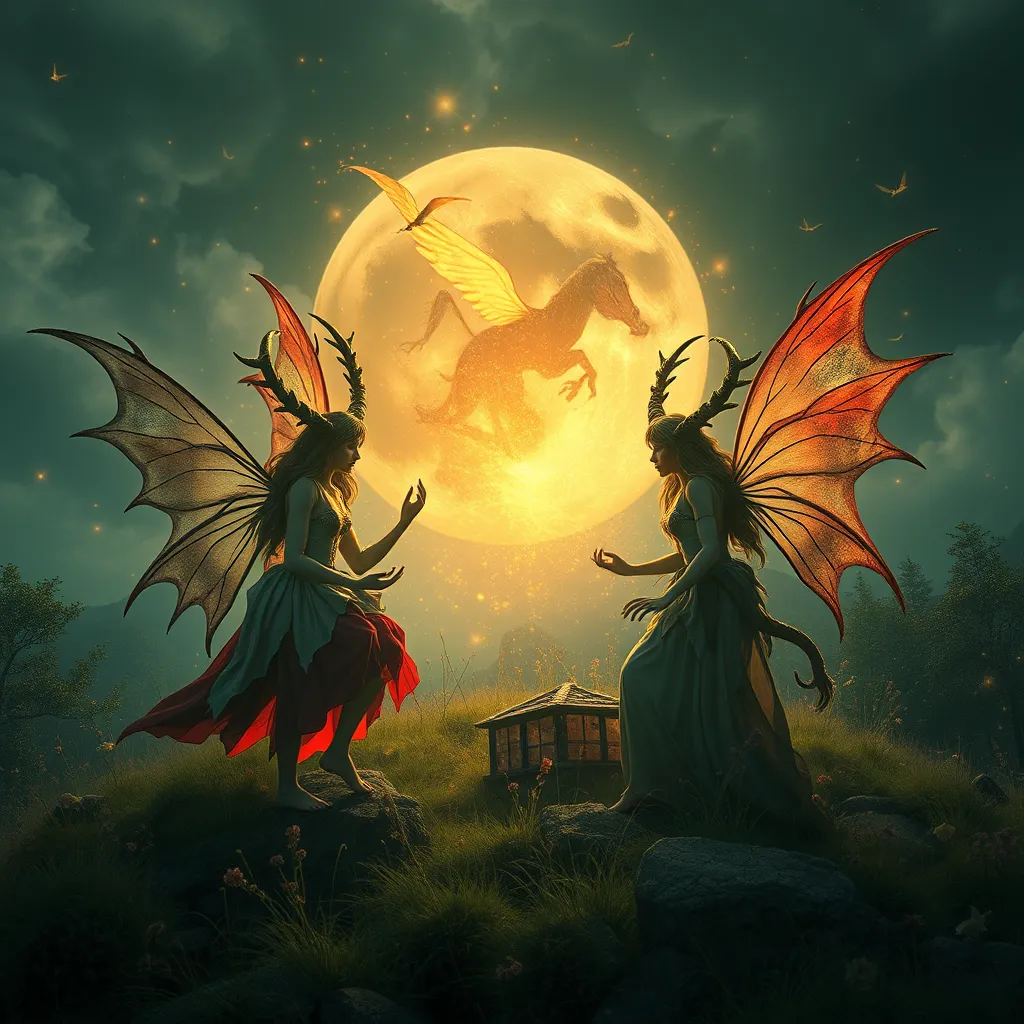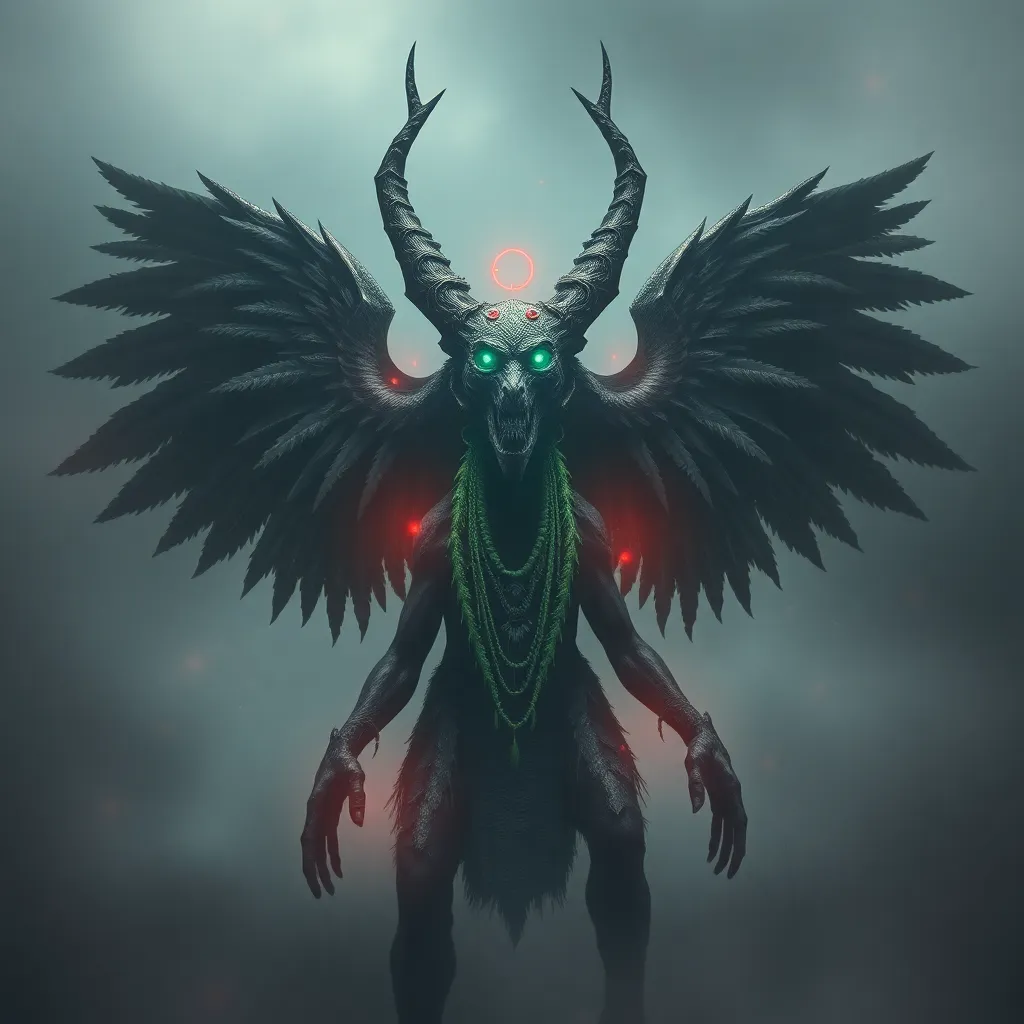The Welsh Faeries: From the Gwyllion to the Tylwyth Teg
I. Introduction
Welsh folklore is a rich tapestry woven from centuries of cultural narratives, myths, and legends. The significance of these tales lies not only in their entertainment value but also in their reflection of the Welsh identity, values, and beliefs. Among the most enchanting elements of this folklore are the faeries, mystical beings that inhabit the landscapes of Welsh mythology.
This article aims to explore the different types of Welsh faeries, particularly focusing on two prominent groups: the haunting Gwyllion and the enchanting Tylwyth Teg. Understanding these faeries provides insight into the broader themes of nature, morality, and the supernatural in Welsh culture.
II. The Role of Faeries in Welsh Culture
Faeries hold a special place in Welsh culture, often seen as intermediaries between the human world and the supernatural. The historical context surrounding these beliefs reveals much about the Welsh people’s understanding of the natural world.
- Historical Context: Traditionally, faeries were believed to inhabit remote natural areas, such as mountains, forests, and rivers. They were often seen as guardians of these places, embodying the spirit of nature.
- Symbols of Nature: Faeries symbolize the beauty and danger of the natural world. They are often depicted as both benevolent and malevolent, reflecting the duality of nature itself.
- Impact on Literature and Art: The influence of faeries can be seen throughout Welsh literature and art, from ancient poetry to contemporary storytelling, highlighting their enduring presence in the Welsh imagination.
III. The Gwyllion: The Haunting Spirits of the Mountains
The Gwyllion are spectral beings often associated with the mountains of Wales. They are depicted as ghostly figures that embody the harshness and beauty of the rugged landscape.
A. Description and Characteristics of the Gwyllion
These faeries are typically described as tall, shadowy figures with long hair, often wearing tattered clothing that blends with the rocky terrain. They are known for their eerie wails, which can be heard echoing through the mountains.
B. Legends and Stories Associated with the Gwyllion
Numerous legends surround the Gwyllion, often portraying them as tragic figures. One popular tale recounts how a Gwyllion once lured a lost traveler to safety, only to vanish into the mist, leaving the traveler bewildered.
C. The Gwyllion’s Role in Cautionary Tales and Moral Lessons
In many stories, the Gwyllion serve as cautionary figures, warning against the dangers of straying too far from the path or disrespecting nature. Their haunting presence reminds people to remain vigilant and respectful of the wilderness.
IV. The Tylwyth Teg: The Enchanted Fair Folk
The Tylwyth Teg, often referred to as the “fair folk,” are perhaps the most celebrated faeries in Welsh mythology. They are known for their enchanting beauty and magical abilities.
A. Overview of the Tylwyth Teg and Their Appearance
Typically depicted as ethereal beings with delicate features, the Tylwyth Teg are said to possess glowing skin and shimmering hair. They often wear elegant clothing made from natural materials, adorned with flowers and leaves.
B. Connections to Welsh Mythology and Ancient Traditions
The Tylwyth Teg are deeply rooted in ancient Welsh traditions, believed to be the spirits of the earth and nature. They are often associated with fertility, abundance, and the changing seasons.
C. Tales of the Tylwyth Teg and Their Interactions with Humans
Many tales recount the Tylwyth Teg’s interactions with humans, ranging from benevolent encounters to mischievous tricks. In one story, a young man who stumbled upon their dance was enchanted and whisked away to their realm, only to return years later, having lost all sense of time.
V. Other Notable Welsh Faeries
While the Gwyllion and Tylwyth Teg are the most notable, Welsh folklore is rich with other faery types, each contributing to the tapestry of faerie lore.
A. Brief Descriptions of Lesser-Known Faerie Types
- The Pwca: A mischievous faery known for playing tricks on humans, the Pwca is often depicted as a small, impish creature who can shapeshift.
- The Ellylldan: These faeries are often associated with the water and are known to guard lakes and rivers. They are said to bring good fortune to those who respect their domains.
- The Gwragedd Annwn: Water spirits or faeries believed to inhabit lakes, the Gwragedd Annwn are often portrayed as beautiful maidens who may help or hinder those who encounter them.
B. The Significance of These Faeries in Regional Folklore
Each of these faeries carries unique narratives that reflect the local beliefs and customs of various Welsh regions, emphasizing the diversity of faerie lore across the country.
VI. Modern Interpretations and Representations
As interest in folklore has surged in contemporary culture, there has been a resurgence of fascination with Welsh faeries.
A. The Resurgence of Interest in Welsh Faeries in Contemporary Culture
Modern storytelling, art, and media have begun to reimagine the faery figures of Welsh folklore, often blending traditional elements with contemporary themes.
B. Faeries in Literature, Film, and Popular Media
Welsh faeries have found their way into novels, films, and television shows, captivating audiences with their enchanting tales. Works such as The Mabinogion and adaptations of Welsh myths highlight their magic and allure.
C. How Modern Interpretations Differ from Traditional Beliefs
While modern portrayals may romanticize faeries, traditional beliefs often emphasize their dual nature—both as protectors and tricksters. This complexity is sometimes lost in contemporary adaptations.
VII. The Importance of Preserving Faerie Lore
The preservation of faerie lore is vital for maintaining the cultural identity of Wales. These stories connect generations and offer insight into the values and beliefs of the past.
A. The Role of Folklore in the Cultural Identity of Wales
Folklore serves as a mirror reflecting the history, struggles, and triumphs of the Welsh people, reinforcing a sense of belonging and heritage.
B. Efforts to Document and Share Faerie Stories
Various organizations and individuals work to document these stories, ensuring that the rich tradition of Welsh faerie lore is not lost to time.
C. The Significance of Passing Down Faerie Lore to Future Generations
Sharing these tales with future generations fosters a connection to their cultural roots and encourages an appreciation for the natural world and its mysteries.
VIII. Conclusion
The diversity and richness of Welsh faerie folklore, from the haunting Gwyllion to the enchanting Tylwyth Teg, highlight the intricate relationship between humans and the supernatural in Welsh culture. These tales serve not only as entertainment but also as moral lessons and reflections of the natural world.
In exploring the enduring legacy of these faeries, we invite readers to delve into the captivating world of Welsh folklore, appreciating the beauty and complexity of its stories, and recognizing the importance of preserving such cultural treasures for future generations.



